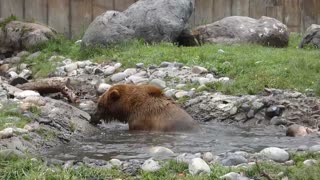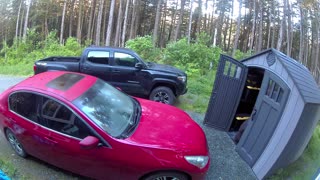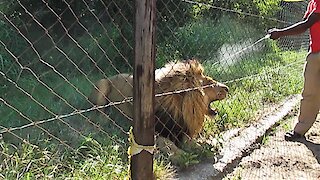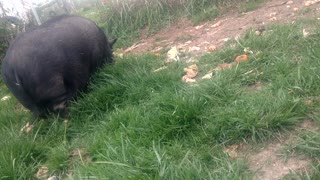Premium Only Content

Young rescued tayra searches for hidden food
This adorable young Tayra had to be rescued, so now he depends on his caretakers to feed him. Animals in captivity need neural and physical stimulation in order to reduce stress and enhance their well-being; it's called environmental enrichment. Hiding the animal's food around the enclosure is one way to do it, keeping the animal busy, looking for it.
The Tayra (Eira Barbara), is the sole member of its genus, but shares the Mustelidae family with over 50 other species, such as otters, weasels, ferrets, badgers, martens, polecats, grisons, and minks. It resembles its arctic cousin, the Wolverine (Gulo gulo).
The Tayra is native to the Americas, and is currently split into nine subspecies: Eira barbara barbara, in southern and central Brazil, western Bolivia, Paraguay and northern Argentina; Eira barbara inserta, from central Costa Rica to southern Guatemala; Eira barbara madeirensis, from northern Brazil to western Ecuador; Eira barbara peruana, from Bolivia to the Peruvian Andes; Eira barbara poliocephala, from northeastern Brazil to the Guianas and eastern Venezuela; Eira barbara senex, from northern Honduras to central Mexico; Eira barbara sinuensis, from Panama to western Venezuela and Colombia; Eira barbara biologiae; Eira barbara senilis.
It is an arboreal animal, although it also uses the forest floor. It is mostly diurnal, but sometimes crepuscular. It is solitary and it can travel long distances within its home range. It is an opportunistic animal, hunting small mammals such as rodents, but also birds, lizards, and invertebrates, as well as climbing trees to get fruit and steal honey.
The Tayra is found mostly in tropical and subtropical forests, secondary rain forests, gallery forests, cloud forests, but also in dry scrub forests, gardens, and plantations, and it does well in agricultural areas and near human settlements. They live in tree hollows or burrows in the ground. The destruction of its habitat is the Tayra's biggest threat, forcing it to live closer and closer to humans.
-
 0:43
0:43
NataliaCara
2 years agoIt's dinner time for this rescued immature Southern Elephant Seal
3481 -
 0:49
0:49
ViralHog
4 years ago $0.65 earnedRescued Bears Play About in Encounter
1.08K -
 2:05
2:05
ViralHog
4 years ago $0.02 earnedBear Searches Shed for Snacks
2082 -
 2:07
2:07
Benfilm
4 years agoA wonderful meeting with a young wild foal
10.2K10 -
 0:38
0:38
ViralHog
4 years ago $0.92 earnedTwo Rescued Animals Have a Moment
4.56K -
 8:01
8:01
ViralHog
4 years ago $0.16 earnedYoung Bear Pays Porch a Visit
4511 -
 2:25
2:25
ViralHog
4 years ago $8.38 earnedRescued Baby Bats Try New Fruit
13.8K1 -
 0:57
0:57
NataliaCara
4 years agoDe-ticking an angry rescued lion is scary business
242K8 -
 3:30
3:30
ViralHog
5 years ago $0.20 earnedRescued Pig and Macaque Enjoy Life
1.58K -
 0:41
0:41
ViralHog
4 years agoRescued Ringtail Possum Curls up to Warmth
163